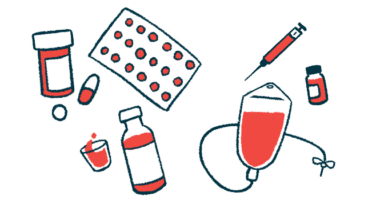Going back to basics and finding strength on the floor
A workout approach that's based on self-awareness

My husband, Jared, doesn’t need a gym anymore, or dumbbells, or fancy machines. These days, all he needs is the floor, a bit of space, and his body.
He still loves the gym and would gladly pick up free weights when the opportunity arises, but there’s something quietly powerful about going back to basics: no apps, no gadgets, just gravity, breath, and discipline.
It’s not flashy, but it works. And in his life with hemophilia and epilepsy, that’s what matters most.
Gentle strength, deep discipline
I’m a cardio girl through and through. I love the high of a long run, along with the the sweat and the speed. Jared’s the opposite. His joints won’t let him run, and high-impact movement puts him at risk for bleeds. Add epilepsy to the mix, and lifting massive barbells becomes dangerous. A seizure mid-rep could do real damage without a capable spotter on duty.
So we found another way. Jared’s workouts now center on body-weight movement: squats, planks, wall sits, and controlled pushups, the kind of exercises that seem simple until you do them right. He doesn’t need to go fast or lift heavy, but rather be present in his body, one breath and one rep at a time.
It’s an approach rooted in self-awareness. Jared listens to his body. If his elbow acts up, he rests it. If his legs feel off, he shifts the focus to his arms. He doesn’t feel pressure to perform or obsess over metrics, he just quietly progresses and steadily practices. There’s no gym membership to renew, no transformation post to upload, but rather just him on the floor, maximizing his capacity. He pushes just enough to get stronger, but not too much that he injures himself.
We live with chronic unpredictability. Between medical appointments, medication costs, and the needs of our daughter, we don’t have the luxury of wasted effort. So we’ve learned to strip things down and build with what we have.
This floor-based training checks all our boxes: It’s cost-free, safe, effective, and easy to adapt. He doesn’t need machines or resistance bands, just his body, moving within its limits, gaining a little more freedom each day.
There’s also peace of mind. He trains in a space we’ve set up with soft flooring and no sharp edges. He doesn’t have to worry about a barbell crashing down mid-set. If a seizure hits, he’s already low to the ground. Without the fear, he can focus on control.
And the benefits go beyond fitness. Fatherhood changed how Jared views his body. He now wants to be strong for presence, not just aesthetics. He wants to be strong enough to carry our daughter without wincing, even as she grows older, to lift groceries without strain, and to hold steady when life throws something unexpected at us — which it always does.
I think about how healing that is: building a relationship with his body that’s shaped not by fear, but by trust. He doesn’t need to chase some ideal. The daily goal of staying present and functional is sufficient. Moving wisely and choosing strength that lasts is what counts.
Note: Hemophilia News Today is strictly a news and information website about the disease. It does not provide medical advice, diagnosis, or treatment. This content is not intended to be a substitute for professional medical advice, diagnosis, or treatment. Always seek the advice of your physician or another qualified health provider with any questions you may have regarding a medical condition. Never disregard professional medical advice or delay in seeking it because of something you have read on this website. The opinions expressed in this column are not those of Hemophilia News Today or its parent company, Bionews, and are intended to spark discussion about issues pertaining to hemophilia.








Leave a comment
Fill in the required fields to post. Your email address will not be published.